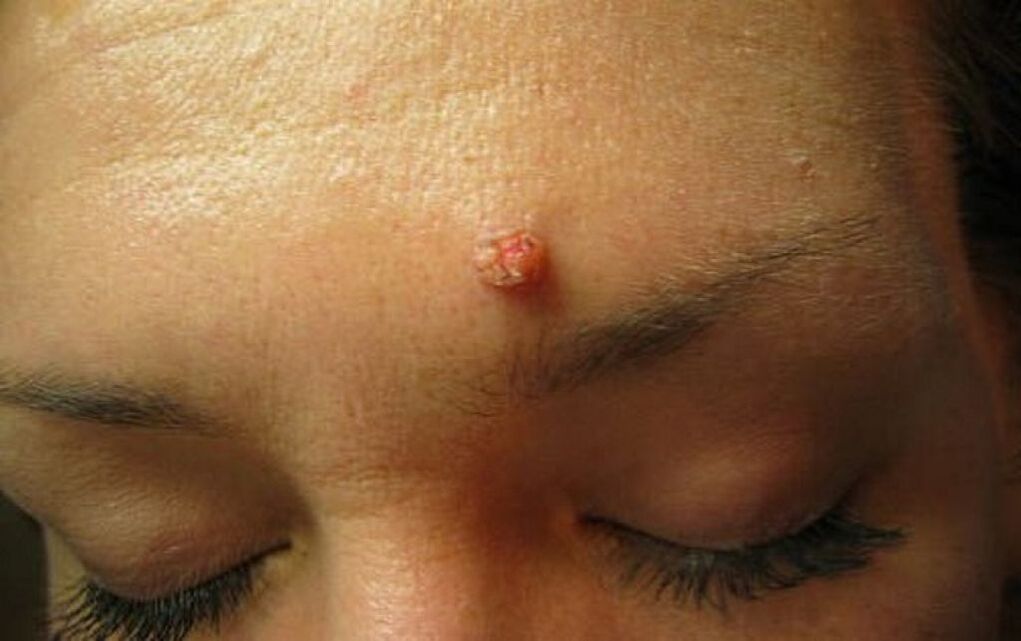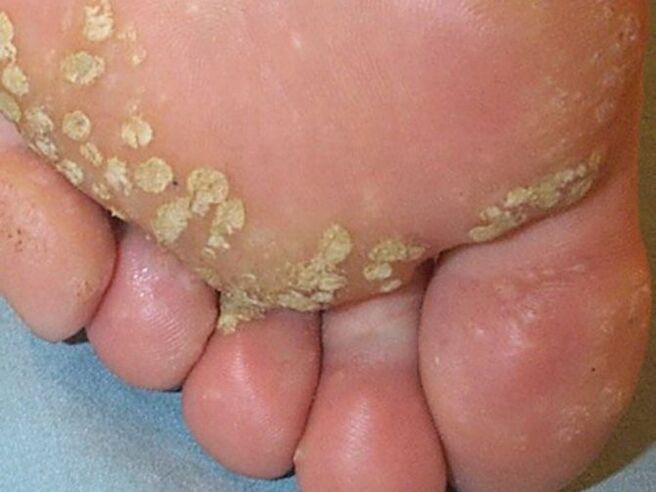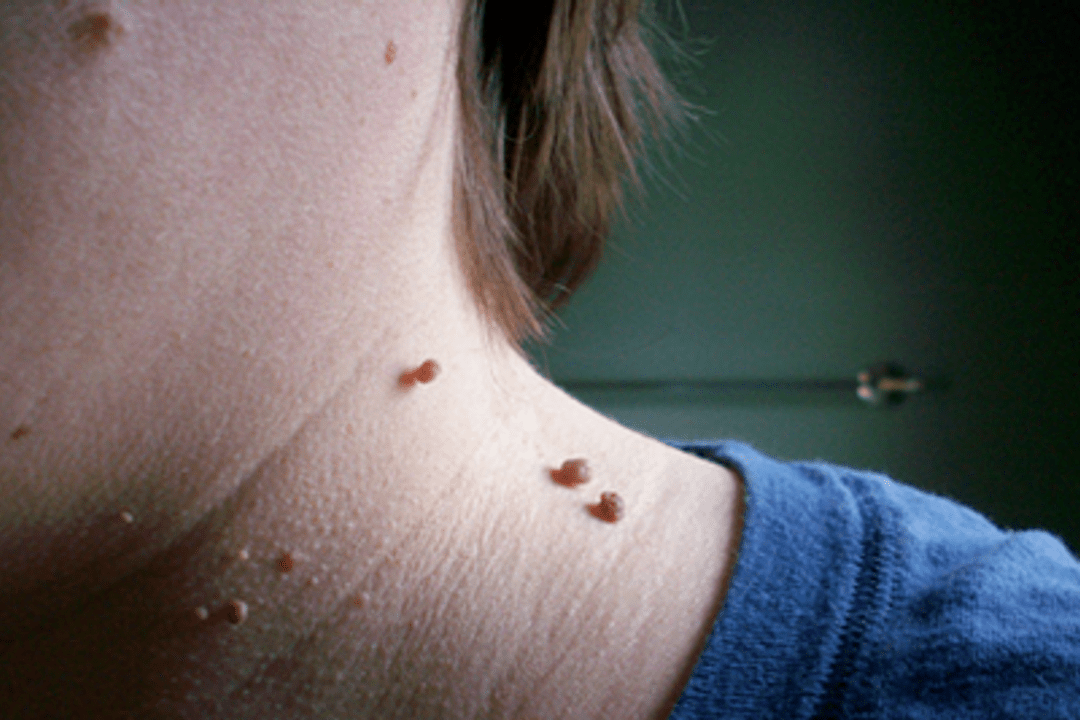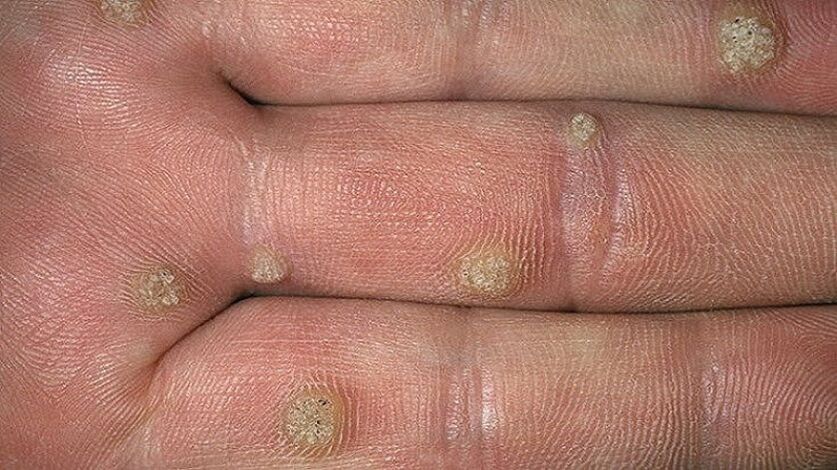Warts are a harmless structure that forms on human skin. It is usually a few millimeters in size, but there are also larger types of warts. Such tumors can occur in any part of the human body.
It is known that not all warts are safe. There are some types of skin ulcers that require immediate removal. This is necessary to prevent further problems.
Classification of warts
In medicine, there are several types of harmless structures that can form on human skin. They differ from each other in appearance, have different developmental characteristics, as well as location.
There are the following types of warts:
- common (common);
- foot (observed in the foot);
- pointed (condyloma);
- filiform (acrocords);
- flat.
Ordinary warts
The diameter of such new tumors usually does not exceed 1 cm. They are very dense tumors with uneven surfaces and clear borders. Skin ulcers of this type are characterized by the following symptoms:

- rounded shape;
- color from yellow to dark gray;
- Common warts are most common on the elbows, fingers, knees, lips, and other areas of the body where injuries are common.
Sometimes the devices disappear on their own, but most of the time they require long-term treatment.
Foot warts
Such growths got their name from their location. They have a convex shape in the legs, but due to the constant pressure created by the weight of the human body, they can become flat. The form is surrounded by a keratin layer of skin.

Vascular growth can be uncomfortable and painful. This type of non-invasive wound differs from corn in that small drops of blood come out when it is cut, not when fluid is infused. Warts on the feet can cause problems with shoes. They can appear at any age.
Genital warts
The fibroepithelial structure contains a large number of interconnected pointed nodes. Their face may be white or red, and sometimes they bleed and cause pain.
Most often, benign tumors form on the mucous membranes and in the areas where they penetrate the skin. In the future, they will grow up to be adults. The result is tumor-like growths.
Filiform warts
This structure in the skin takes its name from the shape. Philiform warts are narrow and long. Their locations are as follows:
- face;
- neck;
- lips.

Outwardly, thread-like structures resemble a broken thread. They can occur in people of all ages, but they are most common in the elderly. During development, thread-like shapes change their appearance:
- At first, the chords look like tiny bumps on the skin. For this reason, they can be easily confused with moles.
- Later the node takes on an increased size, in a longer form. In some cases, the chords are round but still have a thin stem.
- The texture is flexible and relatively dense. As a rule, its length does not exceed 5 mm, but there are cases when the acrocode is more than 1 cm.
Some people have several structures in their bodies that grow together. Thus, they look like a rooster's nest. Acrocords can be brown or remain the color of the body. Sometimes they itch.

Flat warts
Such structures are flat nodes when touched. They are yellow-brown in color and are usually located on the eyelids and face. These nodules are more common in children, but they can also occur in older people. These malignant tumors do not turn into malignant tumors. Such growth is very rare.
Flat warts rise slightly above the skin surface. They are characterized by a smooth surface and clear borders. The distinguishing feature is the absence of keratinized skin, which maintains smoothness and radiance. Such structures are localized on the surface, in the lower leg, on the back of the hand.
Tip!In case of tumors in the body, it is necessary to consult a dermatologist. Only he can determine their nature. This eliminates the development of malignant tumors on the skin.
Old age warts
There is another type of harmless structure formed in the human body, which can be divided into separate categories. Their features are as follows:
- senile warts (seborrheic keratosis) occur only in the elderly and do not require treatment;
- they are usually located on the skin covered with clothing, and are rare on the hands and face;
- Such tumors develop from the epidermis.
Elements of seborrheic keratosis are common. Clinical manifestations depend on the time and location of development. The primary elements are small flat borders in pink or yellow, as well as a warty surface.

They resemble oily skin and can be easily removed. Later, these shells are compacted, cracks and lines. Over time, they turn black or dark brown and take the form of mushrooms.
Formations have a soft consistency, their boundaries are not clear and may even be serrated. However, they are similar to melanoma. In some cases, the dome-shaped elements of seborrheic keratosis are observed.
Tip!In the presence of aging warts, it is recommended to significantly increase the amount of vitamin C entering the body. This will help stop new spots from forming. However, it should be borne in mind that an excess of vitamin C can lead to some changes in the functioning of the stomach, and also contributes to the formation of kidney stones.
The choice of treatment depends on the type of wart being treated. This or that process should not be left to chance. Timely consultation with a dermatologist allows the patient to easily and effortlessly pass through the skin structures. In addition, warts can be confused with harmful diseases, and their treatment certainly does not need to be delayed.














































































